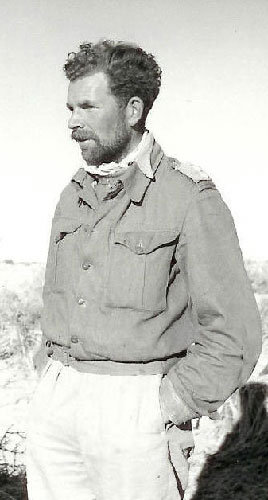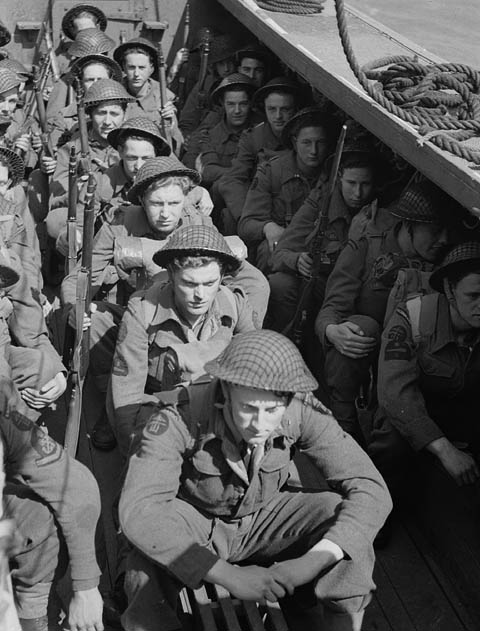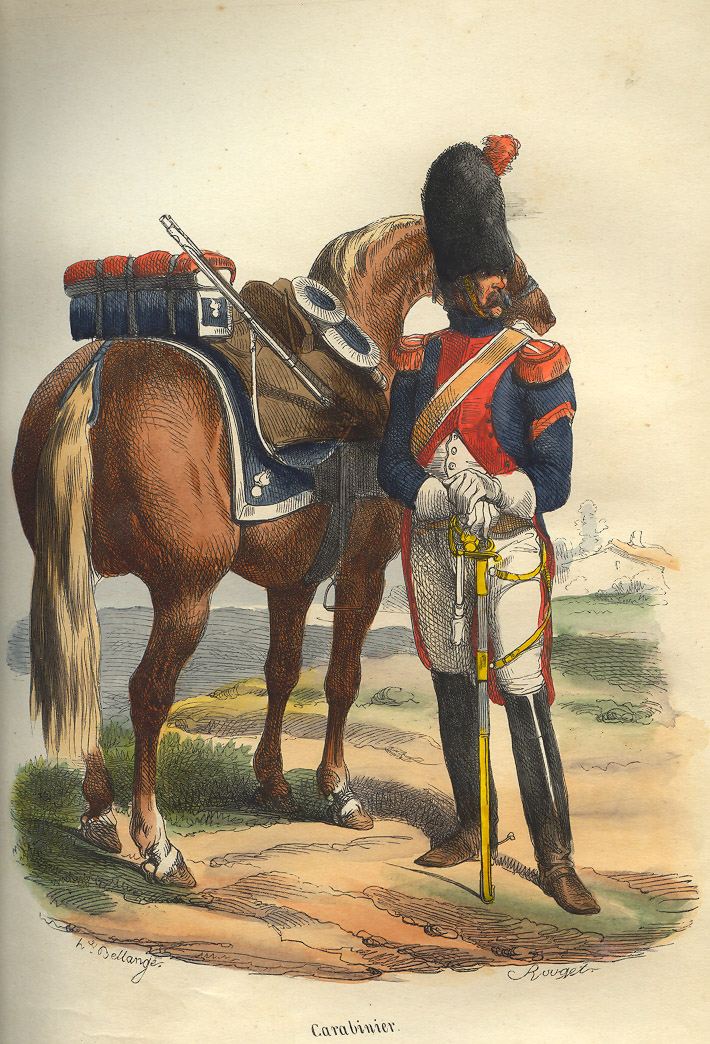|
Operation Caravan
Operation Caravan was a subsidiary of Operation Agreement under which four simultaneous raids were carried out against important Axis Lines of Communication positions in September 1942. The operations were against Tobruk (''Agreement''), Benghazi ( ''Bigamy''), Jalo oasis ( ''Nicety'') and Barce (''Caravan''). ''Caravan'' was the only successful operation of the group. As well as aiding in some of the operations, the Long Range Desert Group was to carry out the attack on the Italians at Barce, particularly the airfield there. To reach Barce, the force travelled . One part of the force attacked the airfield claiming 35 aircraft destroyed, the other attacked the barracks. Force and objectives In early September 1942 'B' Squadron which consisted of two LRDG half-patrols under the command of Major John Richard Easonsmith, left their Egyptian base at Faiyum with orders to "Cause the maximum amount of damage and disturbance to the enemy". The destination was Barce, approximately 80 ... [...More Info...] [...Related Items...] OR: [Wikipedia] [Google] [Baidu] |
Operation Agreement
Operation Agreement was a ground and amphibious operation carried out by British, Rhodesian and New Zealand forces on Axis-held Tobruk from 13 to 14 September 1942, during the Second World War. A Special Interrogation Group party, fluent in German, took part in missions behind enemy lines. Diversionary actions extended to Benghazi (Operation Bigamy), Jalo oasis ( Operation Nicety) and Barce (Operation Caravan). The Tobruk raid was an Allied disaster; the British lost several hundred men killed and captured, one cruiser, two destroyers, six motor torpedo boats and dozens of small amphibious craft. Background The objective of Operation Agreement was to undermine the Axis war effort in North Africa by destroying airfields, harbour facilities, supply ships, vehicles and large oil stores. The Allies also intended to capture Jalo oasis, which was to be used as a rendezvous for the retreating ground forces involved in the other operations. Prelude G1 and T1 patrols of the Long Rang ... [...More Info...] [...Related Items...] OR: [Wikipedia] [Google] [Baidu] |
Faiyum
Faiyum ( ar, الفيوم ' , borrowed from cop, ̀Ⲫⲓⲟⲙ or Ⲫⲓⲱⲙ ' from egy, pꜣ ym "the Sea, Lake") is a city in Middle Egypt. Located southwest of Cairo, in the Faiyum Oasis, it is the capital of the modern Faiyum Governorate. Originally called Shedet in Egyptian, the Greeks called it in grc-koi, Κροκοδειλόπολις, Krokodilópolis, and later grc-byzantine, Ἀρσινόη, Arsinoë. It is one of Egypt's oldest cities due to its strategic location. Name and etymology Originally founded by the ancient Egyptians as Shedet, its current name in English is also spelled as Fayum, Faiyum or Al Faiyūm. Faiyum was also previously officially named Madīnet Al Faiyūm (Arabic for ''The City of Faiyum''). The name Faiyum (and its spelling variations) may also refer to the Faiyum Oasis, although it is commonly used by Egyptians today to refer to the city. The modern name of the city comes from Coptic / ' (whence the proper name '), meaning ... [...More Info...] [...Related Items...] OR: [Wikipedia] [Google] [Baidu] |
Blackshirts
The Voluntary Militia for National Security ( it, Milizia Volontaria per la Sicurezza Nazionale, MVSN), commonly called the Blackshirts ( it, Camicie Nere, CCNN, singular: ) or (singular: ), was originally the paramilitary wing of the National Fascist Party, known as the Squadrismo, and after 1923 an all-volunteer militia of the Kingdom of Italy under Fascist rule, similar to the SA. Its members were distinguished by their black uniforms (modelled on those of the ''Arditi'', Italy's elite troops of World War I) and their loyalty to Benito Mussolini, the ''Duce'' (leader) of Fascism, to whom they swore an oath. The founders of the paramilitary groups were nationalist intellectuals, former army officers and young landowners opposing peasants' and country labourers' unions. Their methods became harsher as Mussolini's power grew, and they used violence and intimidation against Mussolini's opponents.Bosworth, R. J. B, ''Mussolini's Italy: Life Under the Fascist Dictatorship, 19 ... [...More Info...] [...Related Items...] OR: [Wikipedia] [Google] [Baidu] |
Carabinier
A carabinier (also sometimes spelled carabineer or carbineer) is in principle a soldier armed with a carbine. A carbiniere is a carabiniere musket or rifle and were commonplace by the beginning of the Napoleonic Wars in Europe. The word is derived from the identical French word ''carabinier''. Historically, carabiniers were generally (but not always) horse soldiers. The carbine was considered a more appropriate firearm for a horseman than a full-length musket, since it was lighter and easier to handle while on horseback. Light infantry sometimes carried carbines because they are less encumbering when moving rapidly, especially through vegetation, but in most armies the tendency was to equip light infantry with longer-range weapons such as rifles rather than shorter-range weapons such as carbines. In Italy and Spain, carbines were considered suitable equipment for soldiers with policing roles, so the term ''carabinier'' evolved to sometimes denote gendarmes and border guards ... [...More Info...] [...Related Items...] OR: [Wikipedia] [Google] [Baidu] |
AB 41
The Autoblindo 40, 41 and 43 (abbreviated AB 40, 41 and 43) were Italian armoured cars produced by Fiat-Ansaldo and which saw service mainly during World War II. Most ''autoblinde'' were armed with a 20 mm Breda 35 autocannon and a coaxial 8 mm machine gun in a turret similar to the one fitted to the Fiat L6/40, and another hull mounted rear-facing 8 mm machine gun. Development During 1937 the Italian Ministry of War issued specifications for a new armoured car (''autoblindomitragliatrice''), to fulfil the requirements of both colonial police long range patrols and army reconnaissance units for the new armoured formations. In May 1939 the Fiat-SPA and Ansaldo-Fossati consortium unveiled its armoured car proposal, named ''Abm 1'', at the inauguration of the new Fiat Mirafiori plant near Turin; two prototypes had been built, one outfitted for military and one for police use. After trials by the Army, in May 1940 the armoured car was standardised, adopted with th ... [...More Info...] [...Related Items...] OR: [Wikipedia] [Google] [Baidu] |
Italian Africa Police
140px, Badge The Italian African Police (Italian: ''Polizia dell'Africa Italiana'', or PAI), was the police force of Italian North Africa and Italian East Africa from 1 June 1936 to 1 December 1945. Characteristics Towards the end of the war in Ethiopia (late 1936 and early 1937), Italy created a corps of ''Polizia Coloniale'' ("Colonial Police") for law enforcement in Italian North Africa (''Africa Settentrionale Italiana'', or ASI; Libya). The corps was created by reorganization of public safety units operating in Libya. By March 1938, it was issuing license plates. The corps was later expanded to operate in Ethiopia and the rest of Italian East Africa (''Africa Orientale Italiana''; AOI). In 1939, the corps was renamed ''Polizia dell'Africa Italiana'' ("Police of Italian Africa"; PAI). At this time, the corps was supplied with motor vehicles (including armored cars, light tanks, motorcycles, motor-tricycles, and automobiles). The PAI received about 1,000 vehicles and as many ... [...More Info...] [...Related Items...] OR: [Wikipedia] [Google] [Baidu] |
Libyan Arab Force
The Libyan Arab Force, also known as the known as the Sanusi Army, consisting of five infantry battalions made up of volunteers, was established to aid the British war effort. With the exception of one military engagement near to Benghazi, this force's role did not extend beyond support and gendarmerie duties. It was initially known as the British Arab Force and was renamed the Cyrenaica Defence Force in March 1943. Following the outbreak of World War II in 1939, Idris of Libya supported the United Kingdom—which was now at war with Italy—in the hope of ridding his country of Italian occupation. He argued that even if the Italians were victorious, the situation for the Libyan people would be no different than it had been before the war. Delegates from both the Cyrenaicans and Tripolitanians agreed that Idris should conclude agreements with the British that they would gain independence in return for support during the war. Vladimir Peniakoff was commissioned as a second lieut ... [...More Info...] [...Related Items...] OR: [Wikipedia] [Google] [Baidu] |
Senussi
The Senusiyya, Senussi or Sanusi ( ar, السنوسية ''as-Sanūssiyya'') are a Muslim political-religious tariqa (Sufi order) and clan in colonial Libya and the Sudan region founded in Mecca in 1837 by the Grand Senussi ( ar, السنوسي الكبير ''as-Sanūssiyy al-Kabīr''), the Algerian Muhammad ibn Ali as-Senussi. Senussi was concerned with what he saw as both the decline of Islamic thought and spirituality and the weakening of Muslim political integrity. The movement promoted strict adherence to Qur'an and Sunna, without partisanship to the traditional legal schools of thought. It also sought a reformation of Sufism, condemning various practices such as seeking help from the dead, sacrificing for them and other rituals which they considered to be superstitions and innovations. From 1902 to 1913, the Senussi fought French colonial expansion in the Sahara and the Kingdom of Italy's colonisation of Libya beginning in 1911. In World War I, they fought the Senussi ... [...More Info...] [...Related Items...] OR: [Wikipedia] [Google] [Baidu] |
Vladimir Peniakoff
Lieutenant-Colonel Vladimir "Popski" Peniakoff (Russian: Владимир Дмитриевич Пеняков ''Vladimir Dmitriyevich Penyakov'', 30 March 1897 – 15 May 1951) was the founder and commanding officer of No. 1 Demolition Squadron, PPA, colloquially known as "Popski's Private Army", during World War II. Early life Vladimir Peniakoff was born on 30 March 1897 in Huy, Belgium, to affluent Jewish Russian emigre parents where his father, Dmitri, owned and operated an aluminium factory. Peniakoff began an engineering degree at Free University of Brussels at the age of 15 before his studies were interrupted by the German invasion of Belgium in August 1914. His father took him to England where Peniakoff resumed his studies at St John's College, Cambridge reading mathematics. He initially had conscientious objections to participation in the conflict, but by his fourth term at Cambridge his views had altered, and he went to France to volunteer as a gunner in the French a ... [...More Info...] [...Related Items...] OR: [Wikipedia] [Google] [Baidu] |
Willys MB
The Willys MB and the Ford GPW, both formally called the U.S. Army Truck, -ton, 4×4, Command Reconnaissance, commonly known as the Willys Jeep, Jeep, or jeep, and sometimes referred to by its List of U.S. military vehicles by supply catalog designation#G500 to G599, supply catalogue designation G503,According to its United States Army Ordnance Corps Supply Catalog designation, 'G-number', or SNL nr. — a group number for ordering parts, based on a List of U.S. Army weapons by supply catalog designation, Standard Nomenclature List. were highly successful American Off-road vehicle, off-road capable Military light utility vehicle, light military utility vehicles, built in large numbers to a single standardized design, for the United States and the Allies of World War II, Allied forces in World War II, World War II from 1941 until 1945. The jeep became the primary light-wheeled multi-role vehicle of the United States military and its allies, with President Eisenhower once c ... [...More Info...] [...Related Items...] OR: [Wikipedia] [Google] [Baidu] |
Captain (British Army And Royal Marines)
Captain (Capt) is a junior officer rank of the British Army and Royal Marines and in both services it ranks above lieutenant and below major with a NATO ranking code of OF-2. The rank is equivalent to a lieutenant in the Royal Navy and to a flight lieutenant in the Royal Air Force. The rank of captain in the Royal Navy is considerably more senior (equivalent to the Army/RM rank of colonel) and the two ranks should not be confused. In the 21st-century British Army, captains are often appointed to be second-in-command (2IC) of a company or equivalent sized unit of up to 120 soldiers. History A rank of second captain existed in the Ordnance at the time of the Battle of Waterloo. From 1 April 1918 to 31 July 1919, the Royal Air Force maintained the junior officer rank of captain. RAF captains had a rank insignia based on the two bands of a naval lieutenant with the addition of an eagle and crown above the bands. It was superseded by the rank of flight lieutenant on the fol ... [...More Info...] [...Related Items...] OR: [Wikipedia] [Google] [Baidu] |





.jpg)